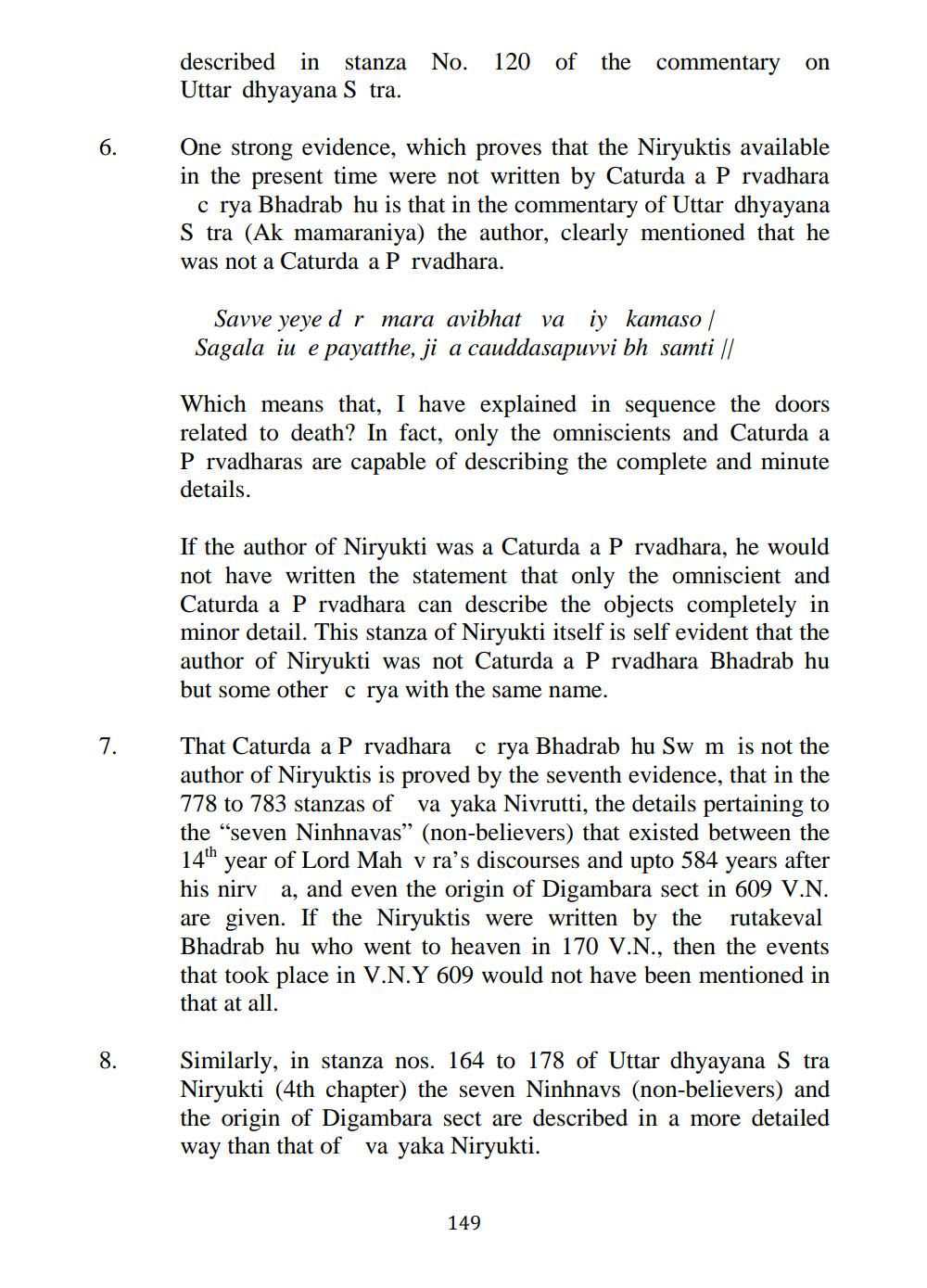________________
of the
commentary on
described in stanza No. 120 Uttar dhyayana S tra.
6.
One strong evidence, which proves that the Niryuktis available in the present time were not written by Caturda a Prvadhara
c rya Bhadrab hu is that in the commentary of Uttar dhyayana S tra (Ak mamaraniya) the author, clearly mentioned that he was not a Caturda a P rvadhara.
Savve yeye d r mara avibhat va iy kamaso / Sagala iu e payatthe, ji a cauddasapuvvi bh samti //
Which means that, I have explained in sequence the doors related to death? In fact, only the omniscients and Caturda a Prvadharas are capable of describing the complete and minute details.
If the author of Niryukti was a Caturda a P rvadhara, he would not have written the statement that only the omniscient and Caturda a P rvadhara can describe the objects completely in minor detail. This stanza of Niryukti itself is self evident that the author of Niryukti was not Caturda a Prvadhara Bhadrab hu but some other c rya with the same name.
That Caturda a Prvadhara crya Bhadrab hu Swm is not the author of Niryuktis is proved by the seventh evidence, that in the 778 to 783 stanzas of va yaka Nivrutti, the details pertaining to the "seven Ninhnavas” (non-believers) that existed between the 14" year of Lord Mah v ra's discourses and upto 584 years after his niry a, and even the origin of Digambara sect in 609 V.N. are given. If the Niryuktis were written by the rutakeval Bhadrab hu who went to heaven in 170 V.N., then the events that took place in V.N.Y 609 would not have been mentioned in that at all.
Similarly, in stanza nos. 164 to 178 of Uttar dhyayana S tra Nirvukti (4th chapter) the seven Ninhnavs (non-believers) and the origin of Digambara sect are described in a more detailed way than that of va yaka Niryukti.
149




